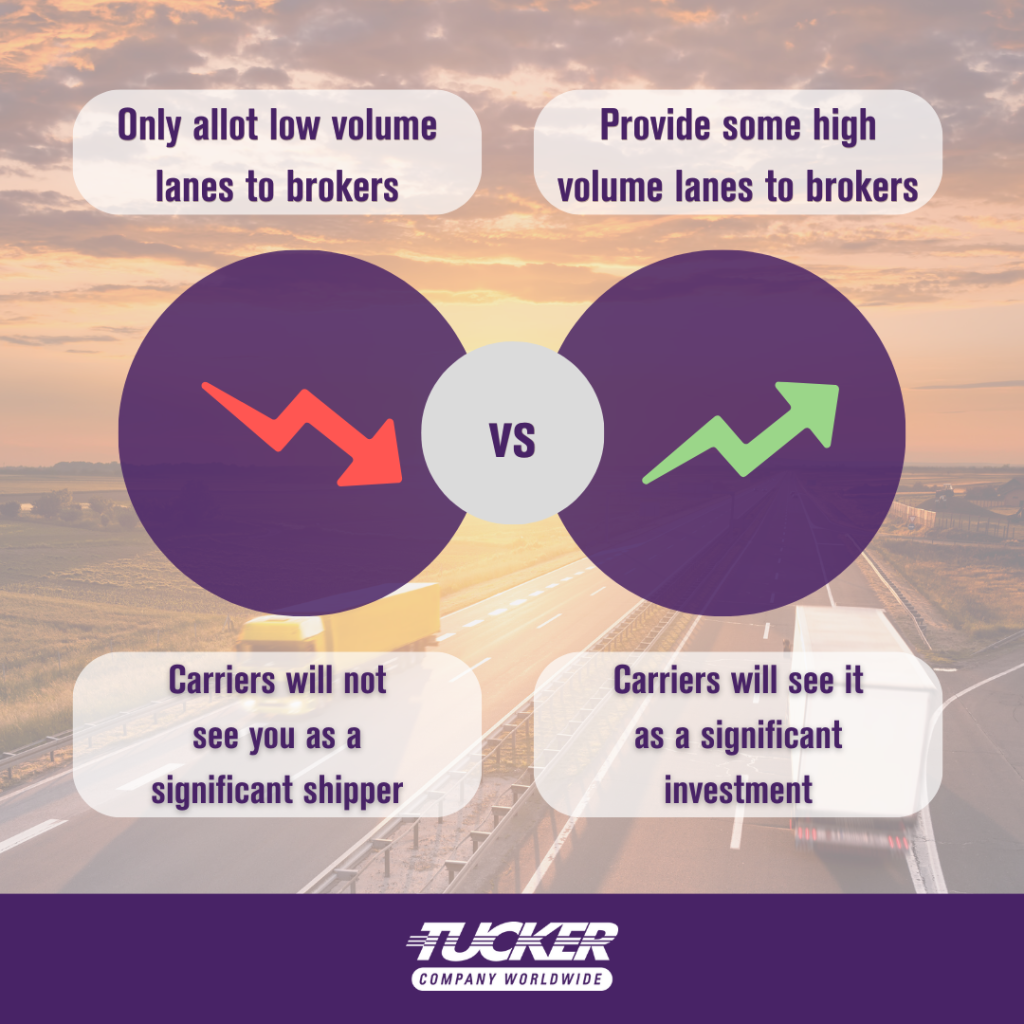Amidst today's highly cyclical truckload market, shippers are faced with the challenge of constructing robust transportation networks that can weather the storms of capacity crises. As the market's volatility continues to rise, the need for shippers to strategically allocate their lanes becomes increasingly apparent. This is where the idea of shippers awarding 50% or more of their lanes to great brokers comes into play. This shift in strategy not only enhances scalability but also fosters resilience in the face of market fluctuations.
In the realm of transportation, data is king, and balance is key. The prevailing wisdom has often leaned toward relying heavily on carriers (“asset-based providers”) to fulfill capacity needs. However, a shift has been occurring over the past decade, emphasizing the significance of balance between carriers and brokers. For the first time in modern history, over 50% of all drivers today drive for fleets who control on average 5 trucks! You simply cannot depend upon large carriers to support business in good times and bad. Understanding this data then, the magic formula lies in the 50/50 volume standpoint - a strategy that might seem unconventional but holds transformative potential. This balance ensures that the shipper leverages the strengths of both brokers and carriers, maximizing its flexible and adaptable transportation network.
For shippers to truly capitalize on this approach, they must understand a crucial element: not just any 50% of lanes will suffice. It's not about relegating low volume lanes to brokers; it's about embracing a strategic blend. The goal is to empower brokers with substantial lanes, and here's why: when the market shifts and the need for scalability arises, brokers armed with high-value lanes become integral. The carriers underwriting the broker lanes see the shipper as a critically important customer and will give added capacity to the shipper as soon as the large asset-based carriers begin rejecting tenders. Big carriers are rejecting loads sooner in market swings, and in higher percentages because (a) their biggest customers demand their attention as other carriers leave them struggling, and (b) large carriers begin offering more of their capacity to the spot market, where rates are higher, and returns are lush. With brokers ingrained into your volume, they and their smaller fleets can scale up more seamlessly as the big carriers begin their rejections.
Shippers who hesitate to award a sizable portion of their lanes to brokers will find themselves facing dwindling tender acceptance rates from carriers sooner in the next market swing, and paying spot prices to gain that needed capacity. If brokers are entrusted solely with low-volume lanes, then the carriers who are supporting that business only see low-volume, sporadic business and thus do not view the shipper as a significant investment. However, by awarding 50% of the volume to carriers and 50% or more to brokers, shippers establish themselves as key players, increasing the likelihood of their freight being prioritized.

The concept of allocating 50% or more of lanes to brokers isn't just about numerical distribution; it's about perception. By entrusting brokers with high-value lanes, shippers convey that they consider brokers as valuable extensions of their logistics strategy. This shift in perspective can lead to increased investment from carriers and brokers alike, enhancing the overall efficiency of the transportation network.
In a market that ebbs and flows, resilience is a shipper's most potent weapon. The concept of awarding lanes based on both price and service is instrumental in fostering this resilience. Shippers should conduct quarterly mini-bids on all lanes where service falls below their Key Performance Indicators (KPIs). Following these steps will ensure shippers can navigate the cyclical nature of the market more effectively.

In an era where the transportation landscape is characterized by its unpredictability, shippers must embrace innovation. Shippers who adopt a 50/50 volume allocation strategy position themselves to navigate these cycles more effectively. If you want scale and flexibility, the carriers your broker uses needs to feel the weight of you, the shipper, as its customer too. By recognizing brokers as partners who can contribute to scalability, flexibility, and resilience, shippers can forge a path to success, even in the face of market volatility. The time to act is now – to build a future-proof transportation strategy that will weather any storm.
Contact us today, and let’s discuss how Tucker can assist you with all your shipping needs.
